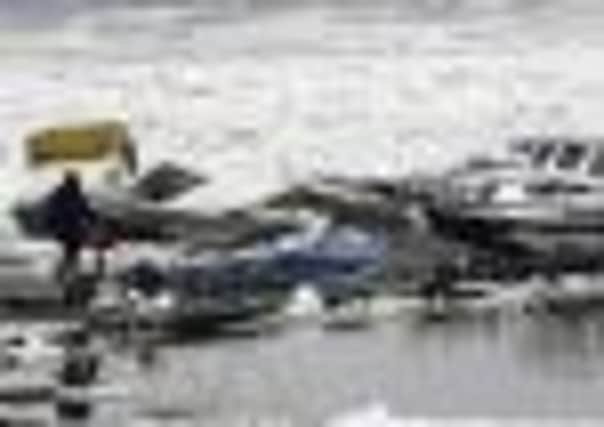Europe faces fresh chaos as deadly freeze melts into deadly floods


About 500 people across the continent from Ukraine to Belgium and Latvia to Italy died in the cold snap that saw temperatures plummet to –35C in places.
But higher temperatures, while bringing a welcome change, have served to create their own form of havoc.
Advertisement
Hide AdAdvertisement
Hide AdOn the River Danube in Belgrade yesterday, pack ice that had sealed in boats for weeks began to break up, smashing and holing vessels and causing them to collide with one another.
Boatowners at the Kapetanija marina in Belgrade’s picturesque Zemun neighbourhood tried to winch boats and pontoons from river, one owner, Mihailo Svilaric, said.
He said: “We are trying to salvage whatever we can. Only a handful of boats remained intact from about a hundred we had in the marina.”
Debris was scattered among the breaking ice for hundreds of feet along the river, and several floating restaurants, barges and boats were beached on river banks after the ice snapped anchor lines.
The flashy floating restaurants and nightclubs lining the Danube are one of the main tourist attractions in the Serbian capital, by night blasting loud “turbo folk” music, a mixture of traditional Balkan folk songs and contemporary electronic beats.
Serbian authorities had used icebreakers on the Danube, Sava and Tisa rivers, but the ice built up too quickly and port authorities halted traffic on all waterways on 8 February.
The 1,777-mile-long river flows through nine countries and is vital for transport, power and industry. But the ice almost totally blocked the route from Austria to the Black Sea. As ice floes up to 1.6 feet thick began to break up they posed a significant danger to shipping along many stretches of the river.
Serbia’s government is considering lifting a two-week state of emergency introduced as an energy-saving measure and to allow rescuers to open roads and bring supplies to as many as 70,000 people stranded by snow and ice in rural areas.
Advertisement
Hide AdAdvertisement
Hide AdHowever, Kristalina Georgieva, the European Commissioner for Crisis Response, Kristalina Georgieva, said she feared “the worst is yet to come”.
She said: “Two weeks with freezing temperatures will be followed by a sharp warm spell. The snow will be melting and we have to help those who suffered and use the next weeks to prevent further damage.”
A taste of what may yet come was experienced a week ago in south-east Bulgaria when melting snow caused a dam near the village of Biser to collapse, killing eight people.
Officials and witnesses describe a wall of water sweeping through the main street, washing away homes and cars.
Snow that sealed off remote villages in parts of Bosnia is now turning into raging torrents of meltwater that threaten, once again, to isolate small farming communities.
The government has army helicopters on stand-by to pluck people and livestock to safety if rivers break their banks, as expected.
In southern Germany, ice is still blocking the Danube to inland waterway shipping along with a series of other smaller canals and rivers.
In Romania, melting snow and ice yesterday claimed the life of a 42-year-old man who was killed after an icicle fell on his head in front of the shop where he worked in the eastern city of Barlad.
In Montenegro, the US military responded to a request from the government by dispatching two Black Hawk helicopters to evacuate people from snowbound regions of the small Balkan country.